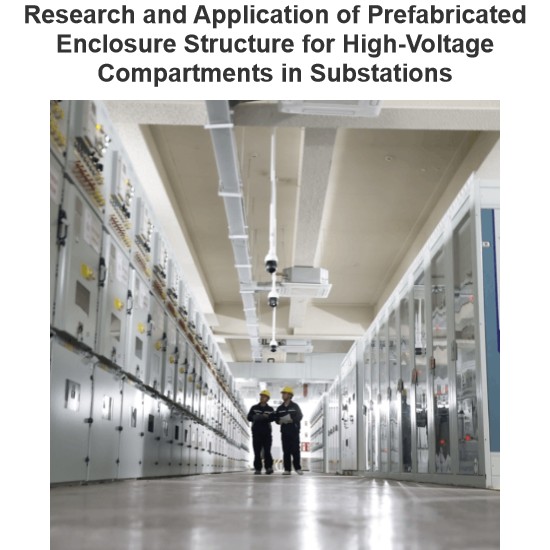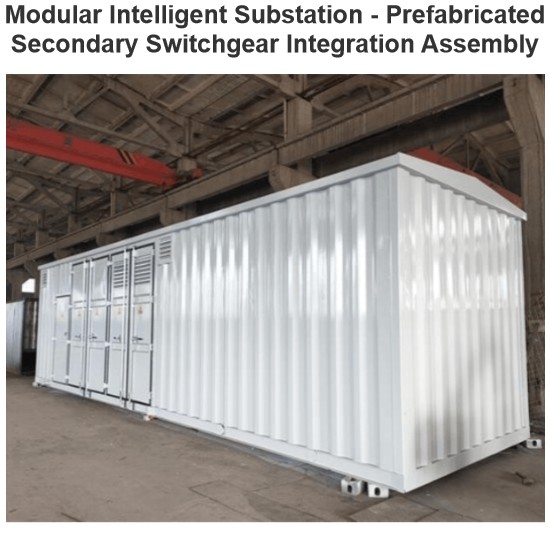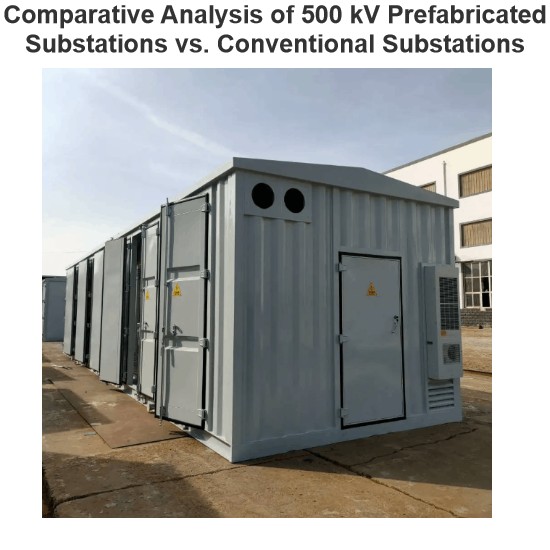1 Implementation Strategies for the Scheme
1.1 Deepen Survey and Research
Before constructing prefabricated cabin - type substations, it is necessary to conduct detailed surveys of local working conditions, clarify the construction scale and objectives, evaluate existing power facilities, plan projects, make up for infrastructure shortcomings, and adjust the construction rhythm. Meanwhile, control costs to avoid project suspension.
1.2 Strengthen Structural Construction
During promotion, multi - dimensional optimization is needed. Design and construction should balance safety and practicality, and incorporate innovative thinking. The cabinets of pre - installed substations adopt an integrated welded structure. The underframe, framework, etc., undergo anti - corrosion treatment for long - term durability; the double - layer structure + heat insulation design controls temperature, and the polyurethane insulation and six - degree anti - corrosion process help improve performance. The anti - corrosion diagram is shown in Figure 1.

The cabinet adopts a high - quality cold - rolled steel steel shell, with sufficient mechanical strength. The minimum top load is 2500N/m²; it can withstand an external mechanical impact energy of 20J, and the corresponding protection level conforms to IK10 specified in GB/T 20138. Meanwhile, it meets the seismic requirements of a horizontal acceleration of 0.3 (g) and a vertical acceleration of 0.15 (g), and has obtained the seismic report issued by the Institute of Engineering Mechanics, China Earthquake Administration.
1.3 Optimization of Internal Control Environment
Modular intelligent prefabricated cabin substations, despite their high flexibility, require critical optimization of the internal control environment. The interior should adopt a concise control model: enhancing response speed of control functions, predicting and eliminating risks, while also adapting to operators' habits for faster system feedback.
For instance, the structure uses "double - layer metal plates + single - layer metal decorative panels", incorporates refrigerator - style insulation technology with polyurethane foam filling, and applies thermal - break insulation to doors/windows (as shown in Figure 2), optimizing the environment at the physical level.
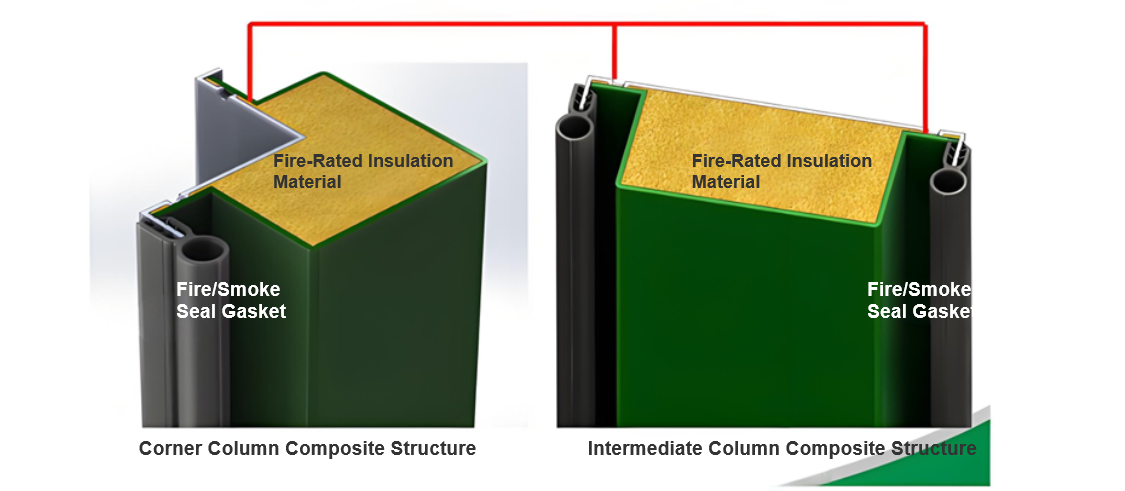
Considering climate and environment, in harsh areas (heavy wind - sand, extreme cold, high pollution), prefabricated cabins use micro - positive pressure dust - prevention tech. Cabin pressure stays at 1.05×external pressure for dust, moisture, and condensation prevention, ensuring equipment stability.
The micro - positive pressure AC integrates micro - positive pressure and air - conditioning systems. It supplies clean air to sealed cabins, keeping internal pressure slightly higher than external; air leaking from door/window gaps flows outward, blocking dust and creating a dust - free environment. The AC also regulates temperature and humidity for constancy. In winter’s low temperatures, as an industrial AC, it starts at - 30 °C, with electric auxiliary heating and the cabin’s good thermal insulation, maintaining a suitable internal operating environment.
1.4 Improving Design Details
Modular intelligent prefabricated cabin substations optimize functions via detail design, use materials complying with regulations, and deliver remarkable benefits.
(1) Lighting System
Explosion - proof LED corridor lights are installed in the inspection corridor, with self - starting emergency lights at both ends for power - off scenarios. Inspection lights are set in unit cabinets, with switches on the operation panel.
(2) Busbars & Cables
For busbars penetrating the cabin top, non - magnetic materials (stainless steel/aluminum) are used for clamps, door panels/frames to avoid eddy currents. Primary and secondary cables are laid independently in sealed channels: The primary channel uses double - layered galvanized sheets + aluminum silicate insulation (Class A fire resistance), matching cable layout. The secondary uses metal trunking, considering anti - interference and shielding.
(3) Settlement Response
Settlement easily damages high - current hard busbars. Thus, fully insulated segmented solid busbars are adopted. Wiring reserves soft - connection nodes and stress - relief bends to compensate for tension and maintain insulation.
1.5 Innovating Maintenance Mechanisms
The operation and maintenance mode should match modular features and cabin functions, ensuring safety, stability, and quick fault removal for upgrades.
1.5.1 Guardrails and Cabin Access Ladders
For multi - level substation construction, protective guardrails are installed around the second - floor cabin. Specifications of the cabin access ladder: The steps are flush with the base of the guardrails; the steps are grid - type (slope > 55°, width < 250mm, height difference between steps > 300mm ), and handrails are equipped on both sides (see Figure 3).
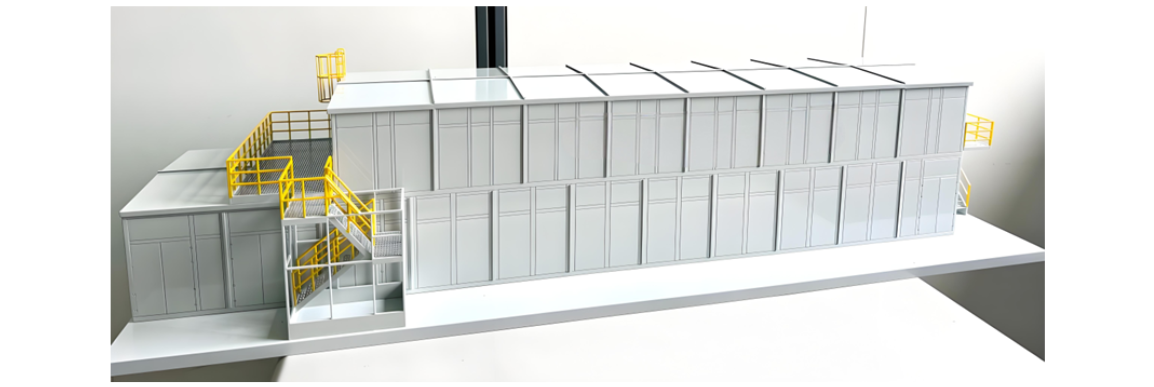
1.5.2 Reserved Test Openings for Cabinet Equipment
Cabinet - type equipment reserves test openings for test tooling installation and voltage - withstand tests. Daily inspection/maintenance uses the internal corridor (width ≥ 1200mm); during repairs, open the opposite inspection door. An emergency escape platform is installed – personnel evacuate to it and slide down in emergencies.
With reserved intervals, cabinet design leaves space for GIS expansion (considering reliability/ease). The top cover splits into 4 modules. For expansion, remove relevant covers, hoist expanded GIS into the cabinet, and assemble.
2 Development Trends
Modular intelligent prefabricated cabin substations need innovative development: The control system integrates intelligent, automation, and big - data technologies to break through the limitations of traditional control, accurately locate and resolve faults; strengthen safety protection, identify external impacts (e.g., lightning protection), and improve drills for extreme disasters.
3 Conclusion
Modular intelligent prefabricated cabin substations can solve problems of traditional construction and support long - term optimization. In the future, the technical system needs to be improved, integrating construction technologies, equipment, and management; during promotion, connect with existing power projects and systems to achieve sustainable development.




